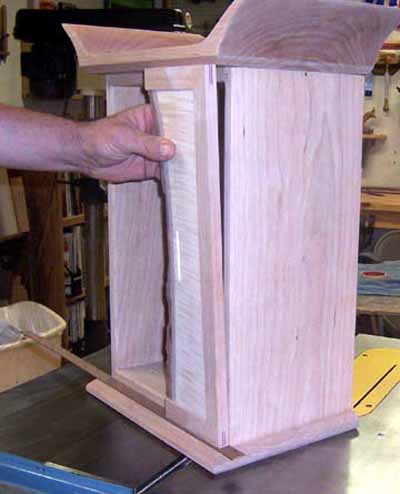Working the doors, to get them to fit properly,
is surely
the most critical step in this process.
They need to be fit to the carcass
before you begin working on their hinge mortises.
Take your time and get them to fit properly...
otherwise,
it is impossible to have a clean,
professional appearance.
Here, in words, is what I mean by a
'proper fit' of the doors...
They should be of a length that allows a smooth
swinging of the hinges while square to allow
their outside edges to align exactly with the
carcass sides.
For the hinges I use...
the minimum "door to carcass" gap possible is 0.050"...
that is the dimension used by the hinge pivots and
means there is absolutely zero free clearance... and
anything above 0.130" the top door
will not engage the hinge pivot.
Sooooo...
there is some room for error... but
not a lot.
I choose to make the doors a final width of
0.075" smaller than the carcass gap.
This leaves a miniscule 12/1000 of an inch
open clearance at the door top/bottom when
the hinges are installed.
To arrive at that gap,
I again turn to relative dimensioning...
Tape a piece of scrap to the carcass bottom of
the clearance you want
(75/1000 in this case)... and
try to fit a door into the opening.
It had better not fit at this point. :)
|

|
|



